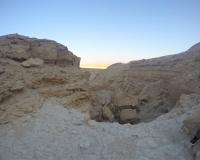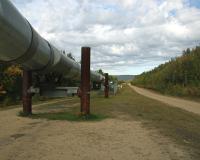
Vibrant Environment
Governance And Rule Of Law
All | Biodiversity | Climate Change and Sustainability | Environmental Justice | Governance and Rule of Law | Land Use and Natural Resources | Oceans and Coasts | Pollution Control

In 2017, former EPA Administrator Scott Pruitt outlined a series of environmental priorities in his “Back-to-Basics Agenda.” Among them was delegating more responsibility to state governments—a call that evoked over 40 years of “tug of war” between state and federal authority over environmental regulation. This question of the proper distribution of power in environmental policy—referred to as federalism—first became salient in the early 1970s with the creation of the U.S. Environmental Protection Agency (EPA) and the crystallization of the federal government’s role in environmental issues.

My long professional experience as an environmental enforcer and corporate compliance officer persuades me that strong enforcement of environmental laws, including sanctions for noncompliance, is essential to deliver their benefits to the public. To borrow from ELI’s slogan, enforcement “makes environmental law work” by reinforcing the accountability of both government agencies and the organizations they regulate for achieving compliance.

On February 14, 2019, EPA and the U.S. Army Corps of Engineers published a proposed rule revising the definition of “waters of the United States” (WOTUS) to redefine “federal authority under the Clean Water Act.” The proposed rule is the second part of the Trump Administration’s two-step process to repeal and revise the Clean Water Rule adopted in June 2015. The 2015 rule is currently in effect in 22 states as the courts sort out numerous challenges.

In litigation involving public lands, the first response from today's U.S. Department of Justice is almost always to contest plaintiffs’ standing.
U.S. Supreme Court decisions and numerous federal court decisions over the last several decades have effectively resulted in two evidentiary phases in most of these cases—first, proof of standing as a constitutional threshold, and second, only if standing is maintained, consideration of the evidence supporting the case on the merits. The standing phase is particularly relevant for public interest plaintiffs in public lands cases; it can require a more exacting showing from those seeking to vindicate public interests than from those asserting private economic interests.

In the late 1970s, revelations about the hazardous waste contaminating sites like Love Canal and Valley of the Drums captured the American public’s attention. In response to concerns about the risk these hazardous dumps posed to both public and environmental health, Congress passed the Comprehensive Environmental Response, Compensation, and Liability Act (CERCLA) in 1980. Commonly referred to as Superfund, CERCLA gives EPA the authority and resources to clean up and remediate sites contaminated by hazardous substances and pollutants.

The global community of agencies and NGOs working in the field of environmental compliance and enforcement has grown substantially in recent years, yet many practitioners remain isolated from others working in the field.
As our understanding of the underlying drivers of environmental compliance and non-compliance deepens, a need arises for creative and unconventional collaboration tools. The recently released UN First Global Report on the Environmental Rule of Law examining the current status of environmental laws highlights...

“Corporate social responsibility” (CSR) has had a mixed reputation on its efforts to achieve environmental protection. Some view the rise of interest in CSR positively, especially as traditional methods of government regulation are hampered by political gridlock and not always up to date with the fast-paced development of current technologies. Others view CSR as “greenwashing,” allowing businesses to reap the benefits of being “green” without actually delivering positive impact for the environment.

On December 13, 2018, the U.S. Court of Appeals for the Fourth Circuit vacated permits issued by the U.S. Forest Service authorizing a pipeline, known as the Atlantic Coast Pipeline, to be constructed across two national forests and the Appalachian Trail. The Atlantic Coast Pipeline is a proposed 604-mile natural gas pipeline that would stretch from West Virginia to North Carolina.

Months after the devastating Camp, Woolsey, and Hill fires in California, the fallout of the blazes continues to rock the state. In the past month, PG&E, the state’s largest electric utility, transitioned out several top executives, had its credit rating downgraded to junk status, and was mandated to inspect its entire electric grid in a sharply worded court order. Last week, the company announced plans to file for bankruptcy by January 29. Citizens, insurance companies, and the state government are also feeling the heat as expected damage costs rise and climate change intensifies the frequency of wildfires. The strain on California’s public and private institutions foreshadows the difficult decisions to come across the fire-prone American West.

The regulations, guidance documents, and policy memos that implement the Clean Air Act (CAA) have gotten longer and more complicated over the decades. This increased complexity has created greater compliance burdens for the regulated community, and the argument persists that it has stifled economic growth and not produced health benefits that equal or surpass the burdens imposed. Air quality has dramatically improved over the past 40 years, yet many current air quality standards are now at levels approaching the ambient background.